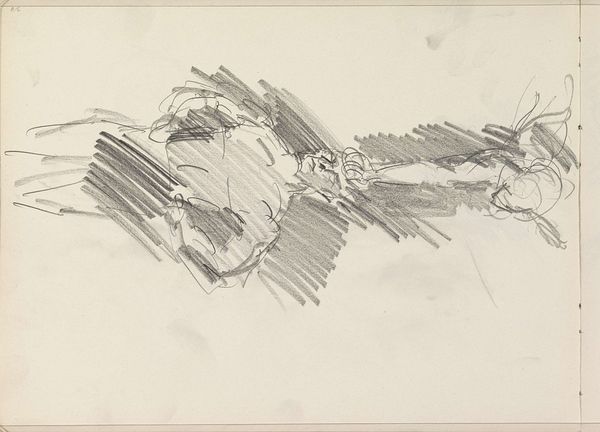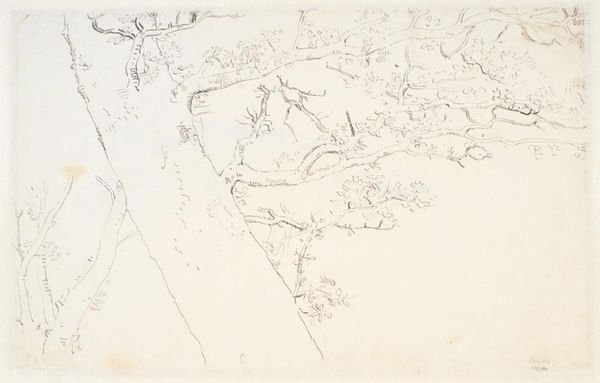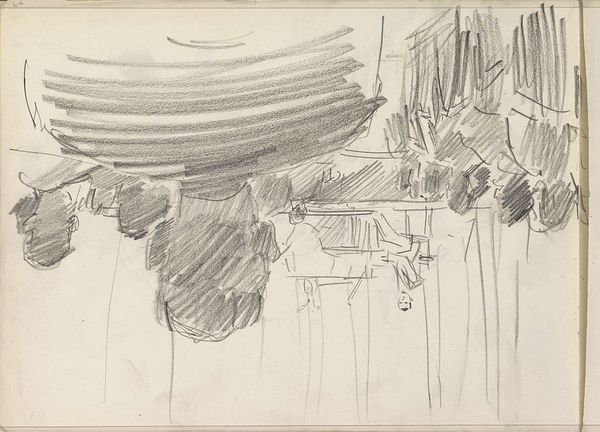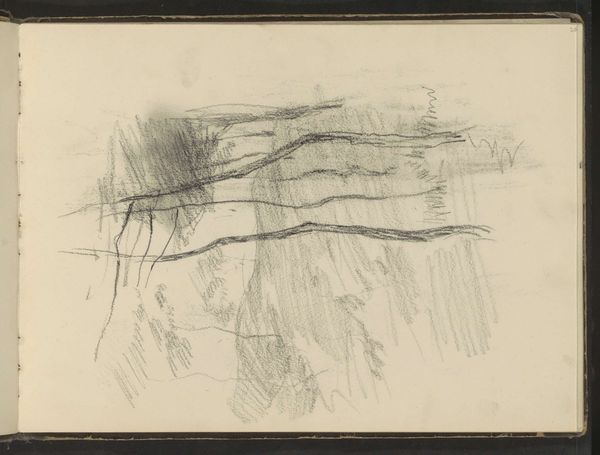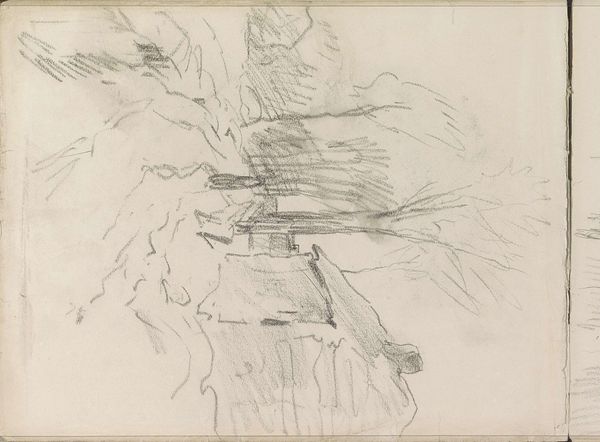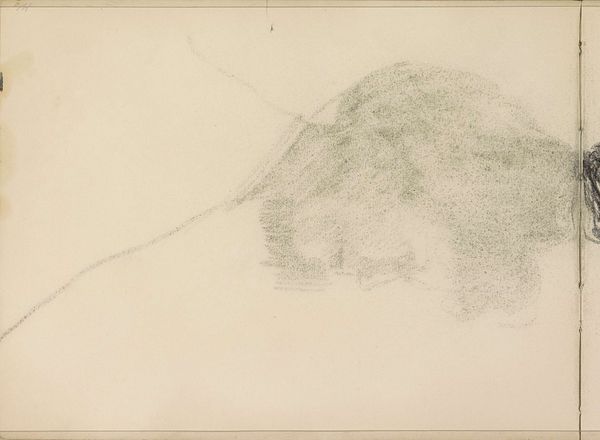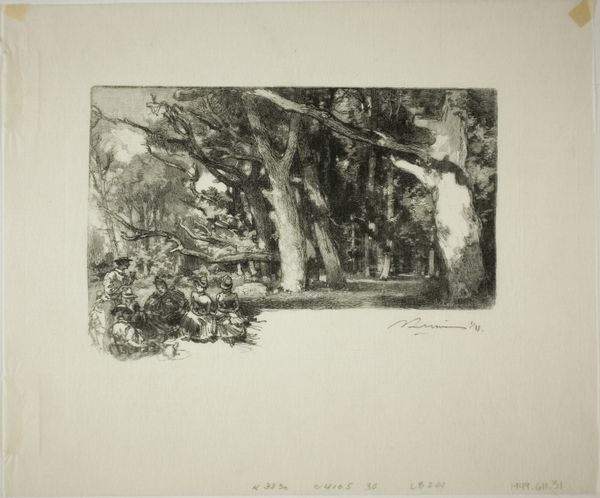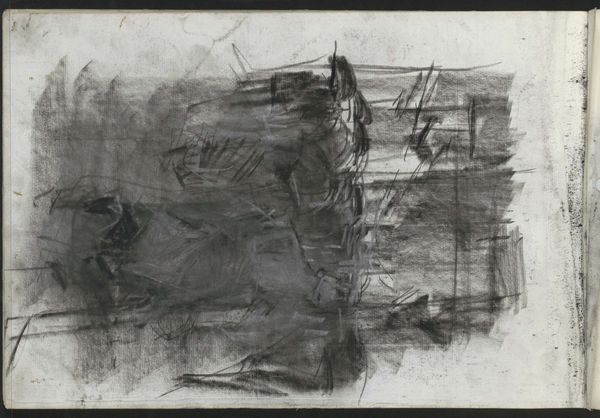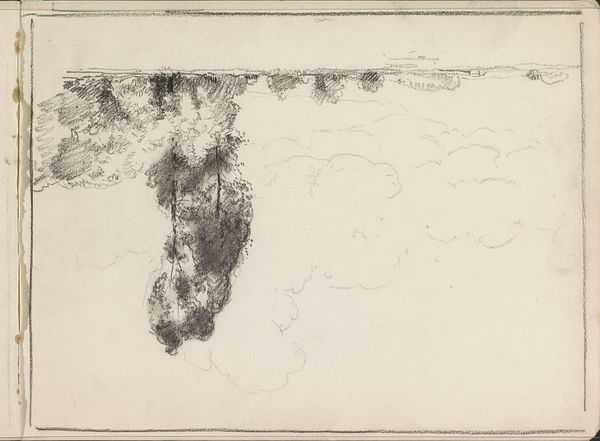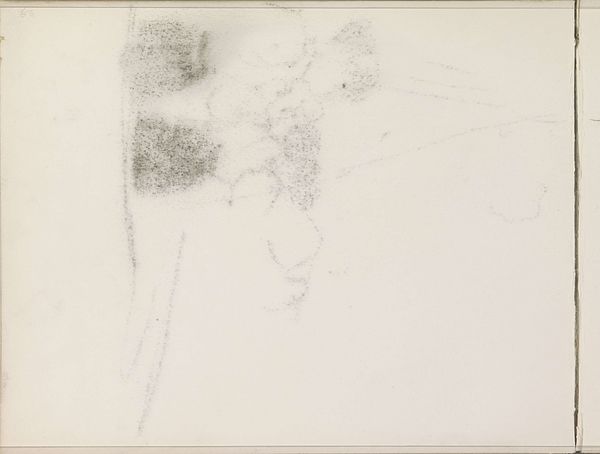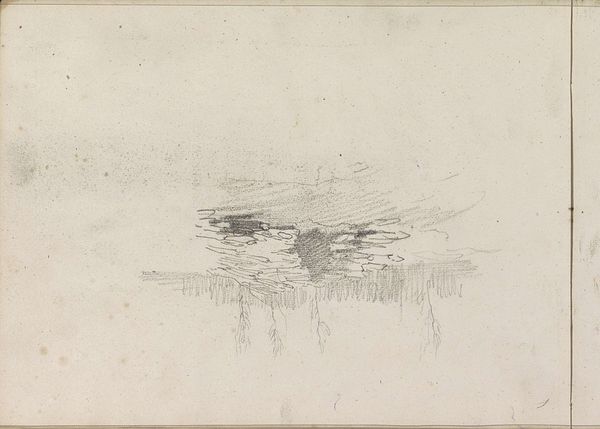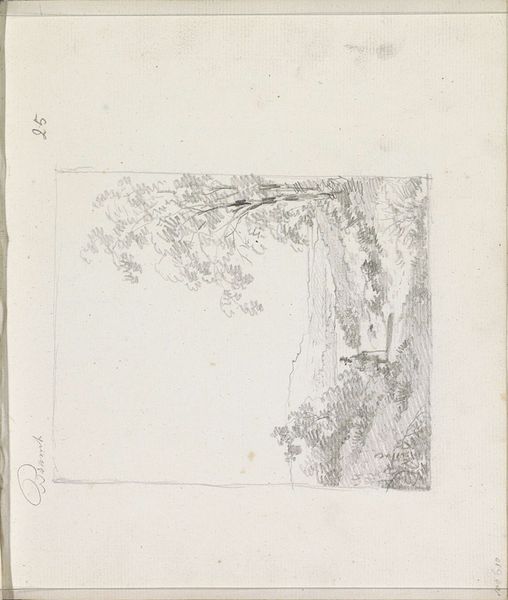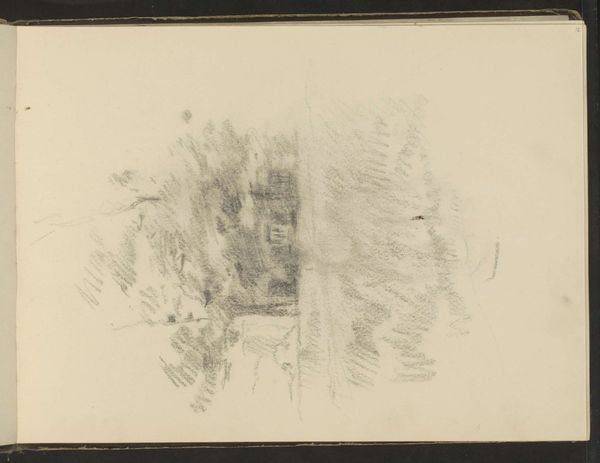
Copyright: Rijks Museum: Open Domain
Curator: Here we have Cornelis Vreedenburgh's "Landschap met bomen en struiken," which translates to "Landscape with Trees and Shrubs," dating from between 1890 and 1946. It’s rendered in pencil, with some suggestion of watercolor, and is currently held in the Rijksmuseum. Editor: It possesses a very serene quality, wouldn't you agree? The overlapping strokes create a sense of depth and the dense foliage hints at a space both comforting and maybe just slightly melancholic. Curator: Considering the probable context, one can view it as less a finished artwork and more of a preliminary study. Pencil sketches, especially those with the ephemeral touch of watercolor, allow for efficient rendering of forms. Think of it as a means of rapid note-taking within the landscape – observing how forms coalesce or fall away with changing light and time of day. This way of creating informs how mass produced art was made using readily accessible materials like pencil. Editor: Interesting point about that immediacy of rendering... The very nature of a quick sketch lends itself to interpreting emotional impact, though. To me, those stark contrasts created with shading aren’t simply documenting light, but amplifying feelings of tranquility found in this particular landscape. Did he perhaps visit this locale seeking respite, turning to nature as a symbol for comfort or emotional clarity? Curator: I appreciate your personal interpretation, of course, and that reading into personal, emotional experience as valid for the work, but I find it much more intriguing to observe how Vreedenburgh uses layering and shading to depict texture of the foliage, as well as the efficiency with which he indicates relative distance and depth on what we may assume to be some type of mass produced paper pad using a mass produced graphite stick.. The social and material implications, in many ways, become a reflection of not only the art-making but the nature of our consumer society! Editor: But don’t you see how these humble materials serve to highlight this intimate, almost meditative state that invites us to linger within it—paper and pencil offering themselves as silent observers and a bridge from the visible landscape to the emotional one within ourselves? Perhaps he understood how art making also held potential cultural value with accessibility in both production and experience? Curator: I suppose that's something to consider for viewers encountering Vreedenburgh's process so long after its making: how its existence speaks to that broader network of artistic labor and material availability, beyond mere representation. Editor: Indeed... perhaps a glimpse into our own search for resonance with landscapes of inner feelings... or even as reminder of just how transient nature is.
Comments
No comments
Be the first to comment and join the conversation on the ultimate creative platform.
